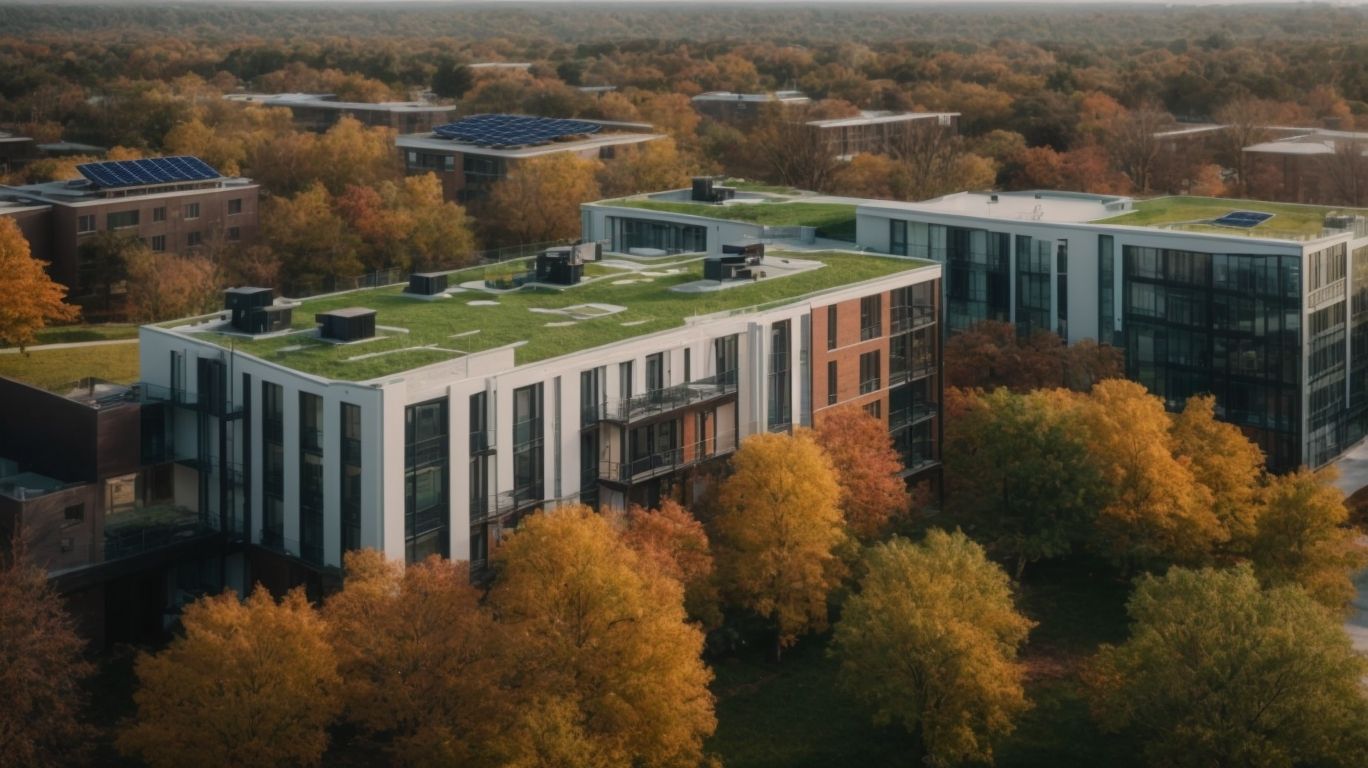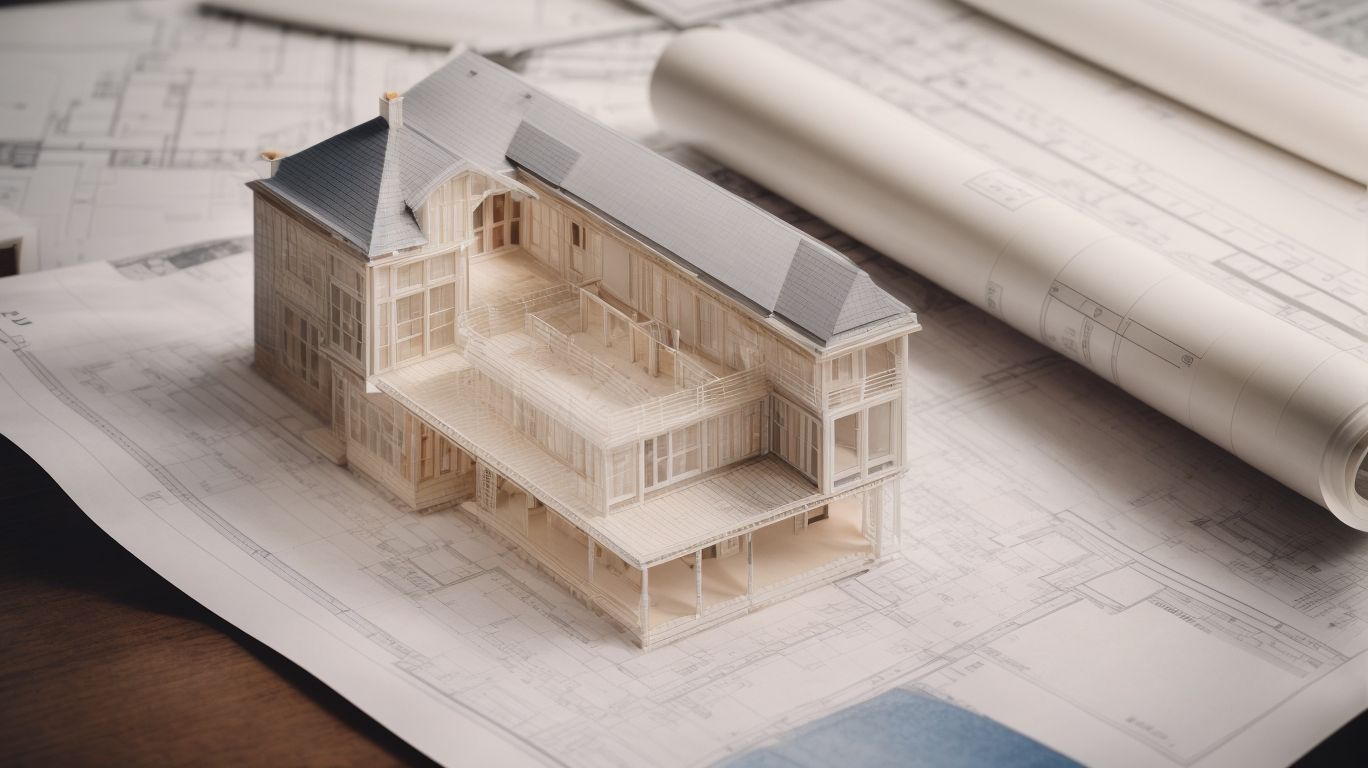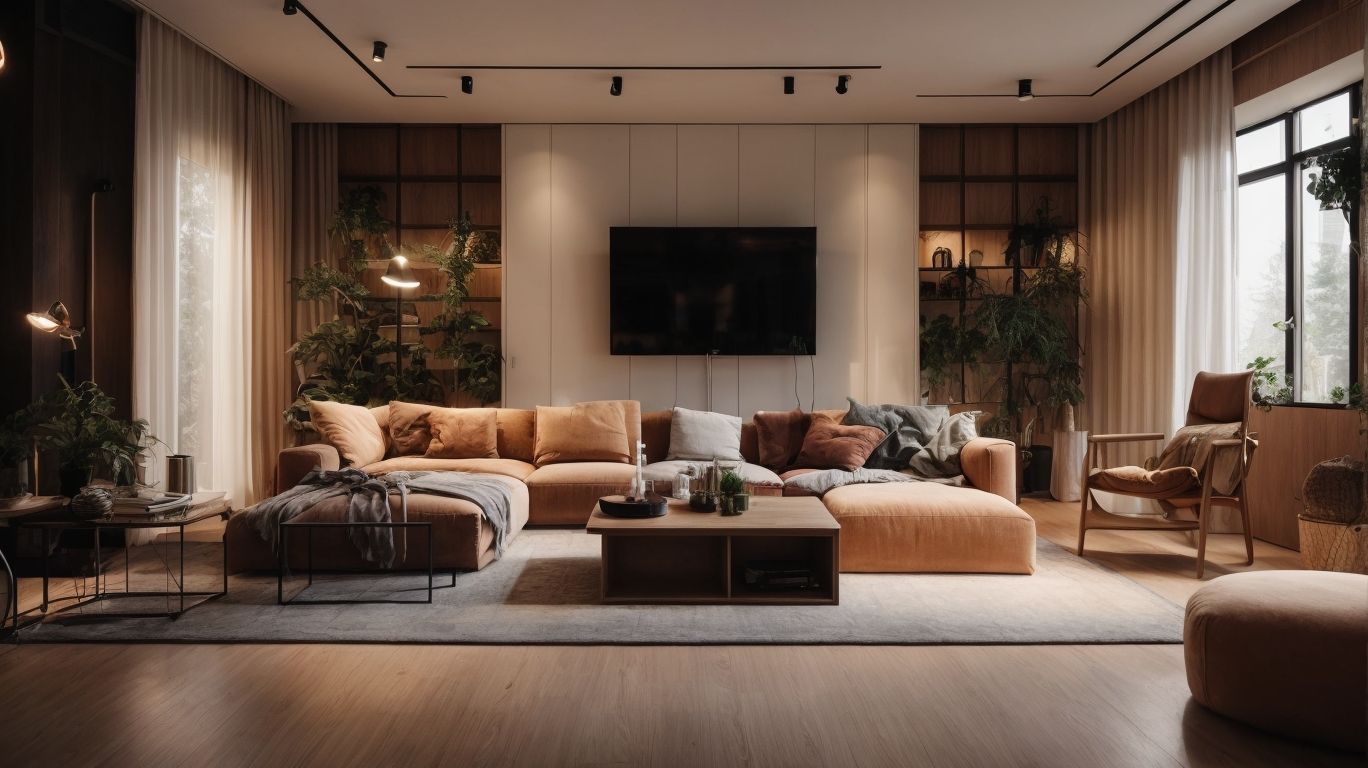
Incorporating Green Building Practices in Your SF Renovation
Green building has become a popular trend in the construction industry, and for good reason. Not only does it benefit the environment, but it also offers numerous advantages for homeowners.
From using sustainable materials to implementing energy-efficient systems, there are many ways to incorporate green building practices in your San Francisco renovation. In this article, we will explore the principles of green building, the benefits it offers, and how you can incorporate these practices into your renovation project.
We will also discuss the potential costs and financial incentives, as well as provide examples of successful green building projects in San Francisco. Whether you’re a homeowner or a contractor, this article will provide valuable insights into the world of green building.
What is Green Building?
Green building refers to the practice of creating structures and using processes that are environmentally responsible and resource-efficient throughout a building’s lifecycle.
Green buildings prioritize sustainable design principles, eco-friendly construction materials, and renewable energy sources. Their goal is to minimize environmental impact through energy and water efficiency, waste reduction, and promoting a healthier indoor environment.
Sustainability is at the core of green building, influencing site selection, design, construction, and operation. By incorporating ecologically conscious practices, these buildings aim to reduce their ecological footprint and contribute to a more sustainable and environmentally friendly built environment.
What are the Principles of Green Building?
The principles of green building revolve around the adoption of sustainable practices, adherence to LEED certification standards, emphasis on waste reduction, improvement of indoor air quality, and integration of sustainable design elements.
Creating environmentally-friendly and energy-efficient buildings is based on fundamental principles. The U.S. Green Building Council has established LEED certification standards, widely recognized as a benchmark for sustainable building design and operation.
Efficient material use, recycling, and responsible disposal practices are key waste reduction strategies that minimize environmental impact. To promote occupant health, indoor air quality is enhanced through ventilation systems, non-toxic materials, and pollutant control.
Sustainable design integrates renewable energy sources, water conservation, and eco-friendly construction methods to support long-term environmental sustainability.
Why Should You Incorporate Green Building Practices in Your SF Renovation?
Incorporating green building practices in your SF renovation is essential due to its significant positive impact on the environment, enhanced energy efficiency, promotion of sustainable living, and the overall transformation of your renovation into a green construction endeavor.
By integrating green building practices, you are contributing to the reduction of carbon emissions and the conservation of natural resources. This not only benefits the environment but also leads to cost savings on energy bills, making it a practical and eco-friendly choice.
The emphasis on sustainable living inspires a shift towards conscious construction practices, creating spaces that prioritize health and well-being. The integration of green building practices marks a positive step towards a more environmentally responsible approach to renovation projects.
What are the Benefits of Green Building?
The benefits of green building encompass a wide range, including energy conservation, water efficiency, promotion of sustainable practices, contribution to urban renewal, and fostering an eco-conscious approach to construction and renovation.
Green buildings offer a range of benefits, including lower operating costs, improved indoor air quality, and reduced strain on local infrastructure. These advantages are achieved through the use of sustainable materials and technologies, which can significantly lower energy consumption and carbon emissions.
In addition to energy efficiency, green buildings often incorporate water-saving features such as efficient plumbing fixtures and rainwater harvesting systems. This not only reduces water usage, but also helps to conserve this valuable resource.
But the benefits of green building go beyond the tangible. They can also enhance the aesthetics of urban areas, revitalizing neighborhoods and promoting a sense of community pride. Furthermore, by promoting an eco-conscious mindset, green building practices can inspire broader efforts towards environmental preservation and sustainability.
What are the Environmental Impacts of Traditional Building Practices?
Traditional building practices have significant environmental impacts, often resulting in the need for green retrofitting, limited low-impact development, and a substantial carbon footprint that contributes to ecological challenges.
The impacts of construction on the environment are far-reaching, ranging from carbon emissions to waste generation. This is due in part to the industry’s heavy use of energy-intensive materials and processes. However, there is hope in the form of green retrofitting, which focuses on energy-efficient upgrades and sustainable materials. Despite its potential, the widespread adoption of low-impact development is hindered by zoning and land use regulations. With the urgent need to reduce the carbon footprint of traditional building practices, there is a pressing call for innovative solutions and a collective shift towards sustainable construction methods.
How Can You Incorporate Green Building Practices in Your SF Renovation?
Incorporating green building practices in your SF renovation can be achieved through the use of sustainable materials, installation of energy-efficient systems, utilization of renewable energy sources, implementation of water-saving measures, and consideration of passive design elements.
By choosing sustainable materials such as bamboo flooring or reclaimed wood, you can greatly contribute to reducing the environmental impact of your renovation project. Not only will this lessen the demand for new resources, but it will also add a unique touch to your space.
Another way to make your renovation more sustainable is by installing energy-efficient systems such as LED lighting and solar panels. These can significantly lower energy consumption and reduce your carbon footprint. Additionally, utilizing renewable energy sources like solar or geothermal power can further enhance the sustainability of your renovation.
Incorporating water-saving measures is also crucial in reducing your environmental impact. This can include installing low-flow fixtures and implementing rainwater harvesting systems to reduce water usage. Finally, incorporating passive design elements such as natural ventilation and strategic shading can optimize energy efficiency without compromising comfort.
Use Sustainable Materials
Using sustainable materials is a cornerstone of green building practices. This encompasses the utilization of sustainable construction techniques, integration of green technology, and incorporation of sustainable building materials to minimize environmental impact.
This approach aligns with the core principles of green construction, emphasizing resource efficiency, reduced waste, and lower energy consumption. Sustainable construction techniques, such as passive design and renewable energy integration, play a pivotal role in enhancing the overall performance and longevity of green buildings.
By selecting sustainable building materials like recycled steel, reclaimed wood, and low-impact insulation, builders can further enhance the sustainable credentials of their projects. This contributes to a healthier and more resilient built environment.
Install Energy-Efficient Systems
The installation of energy-efficient systems is pivotal in green building practices, promoting energy conservation, utilization of efficient appliances, and integration of energy-efficient lighting to minimize environmental impact and enhance sustainability.
Implementing energy-efficient systems can greatly decrease a building’s energy consumption, resulting in lower utility bills and reduced carbon emissions. Efficient appliances not only save energy, but also contribute to a healthier indoor environment.
Incorporating energy-efficient lighting not only reduces electricity usage, but also creates a more comfortable and productive workspace for occupants. Prioritizing energy efficiency in building design and operations is crucial for achieving sustainable and eco-friendly environments.
Incorporate Natural Lighting
Incorporating natural lighting is a key aspect of green building practices, involving passive design elements, utilization of green retrofitting techniques, and the integration of green roofing to optimize natural light utilization and reduce energy consumption.
This approach not only reduces the reliance on artificial lighting but also enhances the well-being of occupants by creating a connection to the outdoors.
Passive design elements such as strategically placed windows and skylights can harness daylight, minimizing the need for electric lighting and cutting down energy costs. Green retrofitting techniques, such as light shelves and reflective surfaces, can maximize the distribution of natural light throughout the building, contributing to a more sustainable and energy-efficient environment.
Implement Water-Saving Measures
Implementing water-saving measures is crucial in green building practices, aligning with eco-friendly principles, promoting sustainable living, and fostering water efficiency to minimize environmental impact and resource wastage.
By incorporating innovative technologies such as low-flow fixtures, greywater recycling systems, and rainwater harvesting, green buildings can significantly reduce their water consumption.
Promoting xeriscaping and efficient irrigation systems contributes to preserving water resources while creating visually appealing and sustainable landscapes.
Such initiatives not only align with environmental stewardship but also enhance the overall efficiency and resilience of green building designs.
Consider Passive Solar Design
Passive solar design is integral to green building practices. It involves the utilization of solar panels, enhancement of energy efficiency, and reduction of the carbon footprint through strategic design elements and solar energy utilization.
Passive solar design allows for the harnessing of natural solar energy to heat and light buildings, significantly reducing the reliance on traditional energy sources. This is achieved through the incorporation of techniques that optimize the building’s orientation, layout, and materials. As a result, energy consumption and operating costs are reduced, promoting a more sustainable approach.
Not only does this benefit the environment, but it also creates healthier and more comfortable indoor spaces for occupants. By integrating passive solar design with green building principles, a significant contribution can be made to mitigating climate change and promoting sustainable development.
What are the Costs of Incorporating Green Building Practices?
Incorporating green building practices involves certain costs associated with sustainable construction techniques, but it also presents opportunities for financial incentives and long-term benefits, particularly in the context of retrofitting existing structures.
Implementing sustainable construction techniques often requires an initial investment in high-efficiency materials, advanced insulation, and energy-efficient systems. These upfront costs can be mitigated through various financial incentives such as tax credits, grants, and rebates offered by government programs and utility companies.
The long-term benefits of reduced energy consumption, lower operating costs, and improved occupant health and productivity make green building practices a financially prudent choice, especially when retrofitting existing structures.
Are There Any Financial Incentives for Green Building?
Several financial incentives exist for green building, ranging from tax benefits and grants to subsidies and rebates. These incentives aim to foster urban renewal, promote the utilization of efficient appliances, and support the development of green infrastructure.
Incentives are crucial in promoting the adoption of sustainable practices by property owners and developers. Tax benefits, for example, can significantly lower the cost of green building initiatives, making them more financially viable. Grants and subsidies also play a significant role by providing direct financial assistance, while rebates act as powerful motivators for the implementation of energy-efficient technologies.
By incorporating these incentives, communities can not only become more sustainable and eco-friendly but also drive economic growth and promote environmental stewardship.
What Are Some Examples of Green Building in SF Renovations?
There are several noteworthy examples of green building in SF renovations, showcasing sustainable living principles, innovative green technology integration, and the realization of eco-friendly renovation endeavors that prioritize environmental impact reduction.
In these renovations, sustainable living principles are exemplified through the use of energy-efficient appliances, water-saving fixtures, and the incorporation of natural lighting to reduce the overall energy consumption.
Innovative green technology integration is evident in the installation of solar panels, green roofs, and advanced insulation materials to optimize energy efficiency. Eco-friendly renovation endeavors prioritize environmental impact reduction by utilizing reclaimed materials, implementing waste management systems, and integrating smart home technology to monitor and control energy usage.
The Exploratorium at Pier 15
The renovation of The Exploratorium at Pier 15 exemplifies green building practices through the incorporation of sustainable construction techniques, green retrofitting initiatives, and the implementation of sustainable practices to transform the facility into an eco-conscious and energy-efficient space.
This project emphasizes the use of eco-friendly materials and energy-efficient design solutions. The building’s infrastructure was upgraded to include advanced insulation, energy-efficient HVAC systems, and smart lighting controls.
The renovation integrated renewable energy sources such as solar panels and wind turbines, significantly reducing the facility’s carbon footprint. The transformation also included the implementation of sustainable water management systems, including water recycling and conservation measures, to minimize water usage and environmental impact.
These initiatives collectively demonstrate a comprehensive commitment to environmentally-responsible construction and operation.
The California Academy of Sciences
The California Academy of Sciences stands as a prime example of green building, featuring the integration of green infrastructure, efficient appliances, and sustainable design elements to create a sustainable and environmentally conscious venue for educational and research pursuits.
The incorporation of green infrastructure, such as vegetated roofs and rainwater harvesting systems, helps reduce the environmental impact of the building. Energy-efficient appliances and renewable energy sources minimize the building’s carbon footprint.
The sustainable design elements, like natural lighting and passive ventilation, contribute to a healthier indoor environment. This holistic approach aligns with the Academy’s mission of exploring, explaining, and sustaining life, creating a space that not only educates but also inspires visitors to adopt environmentally friendly practices.
The San Francisco Public Utilities Commission Headquarters
The San Francisco Public Utilities Commission Headquarters exemplifies green building practices through urban renewal initiatives, green roofing implementation, and the utilization of renewable energy sources to transform the headquarters into a sustainable and environmentally responsible facility.
The integration of sustainable building materials, such as recycled steel and reclaimed wood, further solidifies its commitment to reducing environmental impact.
The incorporation of natural daylighting and energy-efficient lighting systems supports the building’s energy usage optimization.
The installation of water-efficient fixtures and a comprehensive stormwater management system showcases their dedication to water conservation and sustainable urban development.




No Comments